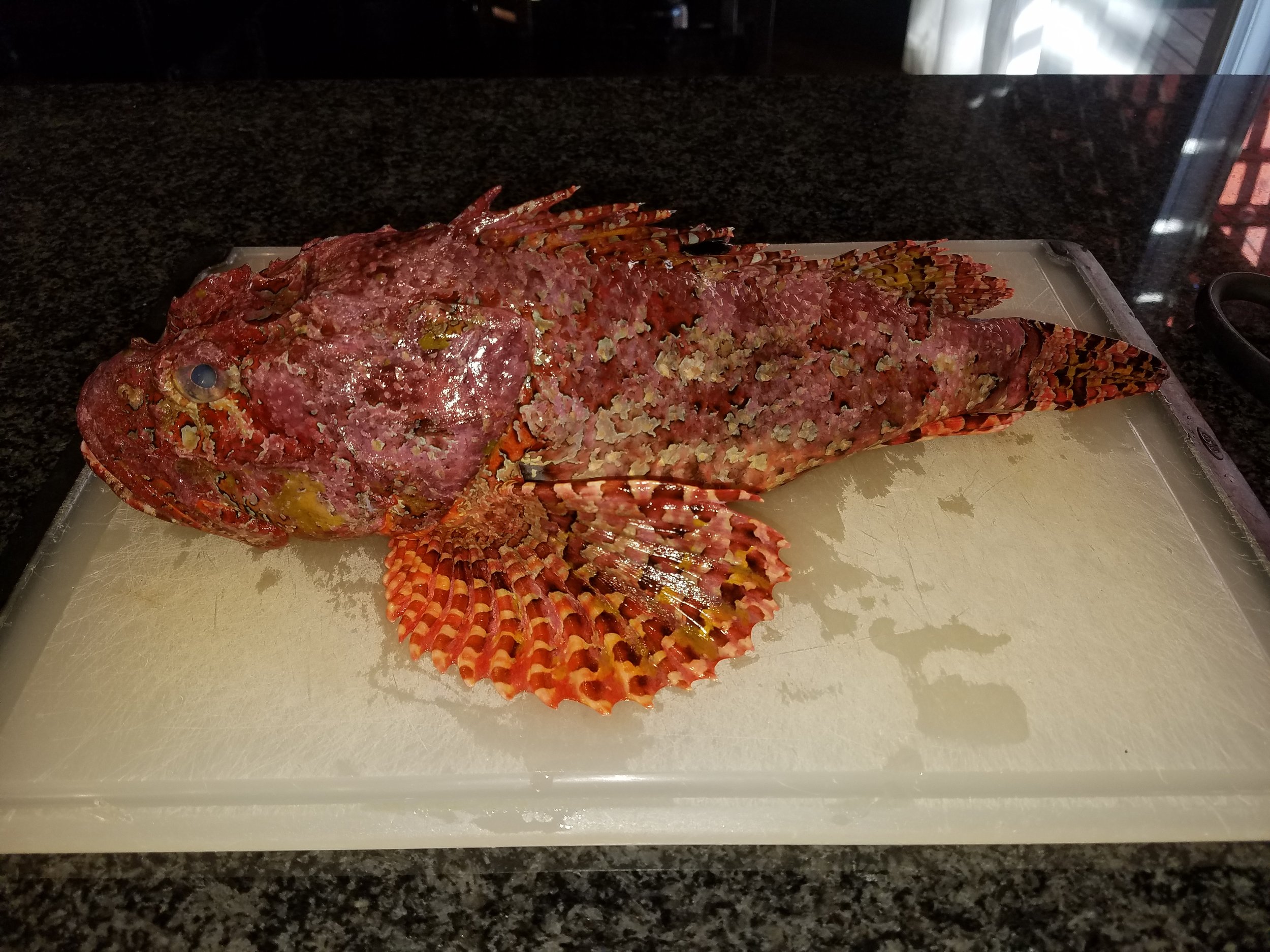PREPARING A SCULPIN (BIG-HEADED WILD CARD FISH)
One of my favorite fish to eat is the humble and often maligned Sculpin. These can be a challenge to get into, as they are covered with sharp edges and spines. They can be intimidating to work with, but processing them in this way makes it just as easy as more standard-shaped species. This technique works for many types of big headed, low yield fish. It can actually work for almost any fish, but it is ideal for sculpin, sea robins, cabezon, lionfish, and small monkfish. You will need a cutting board, a knife, and some sturdy kitchen scissors.
Trim off the spines and fins. Don’t worry about the big pectoral fins.
Open the body cavity by inserting a knife point into the vent, just in from of the anal fin. The blade point should be shallow and the blade edge should be facing up. Do not cut deep into the viscera, but just deep enough to open the fish from vent to between the pectoral fins.
Now find the part of the fish where the head stops being a rocky shell and the meat starts. Make a cut along this line from the top of the fish to connect to your first cut. Angle the knife forward to get as much meat as possible. Cut all the way down to the spine at the top.
Grasp the head and insert the kitchen scissors around the spine. Holding the head firmly, cut through the spine. This will take a bit of force.
Here’s where the magic happens. Grab the head in one hand and the body in the other hand and break the head downward. Slowly pull the head toward the tail. When you are done, you’ll have the head and all the junk in one hand and the tail with all the good stuff in the other hand.
Now you can clean this up as much as you want. You definitely want to remove the fish kidneys, which look like congealed blood along the spine. You can pick these out with a knife or scrub them off with a brush and then rinse with cool water. You may also want to either remove the skin or scale the fish. I prefer to remove the skin most of the time with sculpin, but it does not have a bad flavor and comes off easily after cooking. The plus side of removing the skin first is that it is easier to season the fish. Remove it if you plan to batter the fish. To remove the skin, get it started on an edge and then when you have a big enough piece to grab, just rip it off like a bandaid.
Wash the tail section.
From here, everything else is personal preference. You can trim off anything you don’t like. You can work along the underside and remove any pin bones that are exposed. You can cut off the tail. If you are going to fry the fish, you can cut diagonal cuts along the sides of the fish to allow the spices and oil to get into the meat more. You can cut off the tail if you like. With practice, this process should take just about 2 minutes and should yield a clean tail segment with no fins, no skin, and very few bones. It should allow you to eat the entire fish with minimal waste and minimal difficulty. From this stage, the fish can be baked, broiled, grilled, sautéed, or deep fried.














